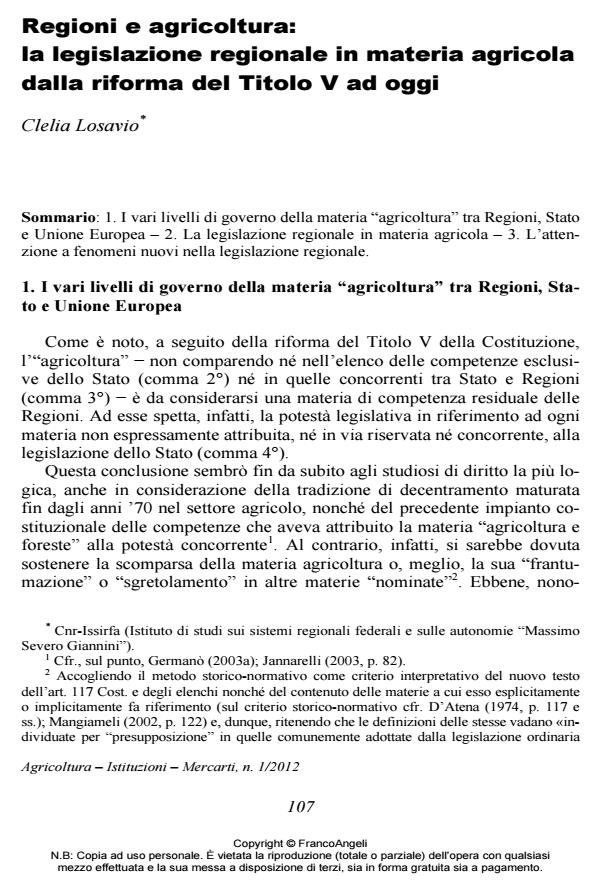Regions and Agriculture: the Regional Legislation on the Agricultural from the Reform of Title V up to Today
Journal title AGRICOLTURA ISTITUZIONI MERCATI
Author/s Clelia Losavio
Publishing Year 2013 Issue 2012/1
Language Italian Pages 12 P. 107-118 File size 343 KB
DOI 10.3280/AIM2012-001007
DOI is like a bar code for intellectual property: to have more infomation
click here
Below, you can see the article first page
If you want to buy this article in PDF format, you can do it, following the instructions to buy download credits

FrancoAngeli is member of Publishers International Linking Association, Inc (PILA), a not-for-profit association which run the CrossRef service enabling links to and from online scholarly content.
Regional laws about agriculture - that in Italy is a residual regional jurisdiction - has to compete, on one side, with other national government competences related to the "environmental protection"; "competition protection"; "feeding", etc.; on the other side, with even more stringent limits deriving to Italy from the European Union. Both of them, national and European laws, limit regional legislative power about agriculture. However, considering the regional legislation of the last ten years (from the reform of Title V to date), it’s possible to note that agriculture remains a sector very dynamic. In particular, it is characterized by an oscillation between old and new: in addition to "typical" regional legislation (laws about: organic farming; apiculture; rural tourism; protection of quality agricultural products; rural districts or quality food discricts; harvesting and marketing of mushrooms and truffles; hunting and fishing, etc.), it’s possible to note the presence of new situations and problems that inevitably require innovative legislative formulas and choices, especially when there’s no national legislative framework (laws about social agriculture or in support of energy production from agricultural biomass).
Keywords: Regional Laws, Agriculture.
- Prime note su agricoltura e sussidiarietà orizzontale Pamela Lattanzi, in AGRICOLTURA ISTITUZIONI MERCATI 1/2015 pp.23
DOI: 10.3280/AIM2014-001003
Clelia Losavio, Regioni e agricoltura: la legislazione regionale in materia agricola dalla riforma del Titolo V ad oggi in "AGRICOLTURA ISTITUZIONI MERCATI " 1/2012, pp 107-118, DOI: 10.3280/AIM2012-001007